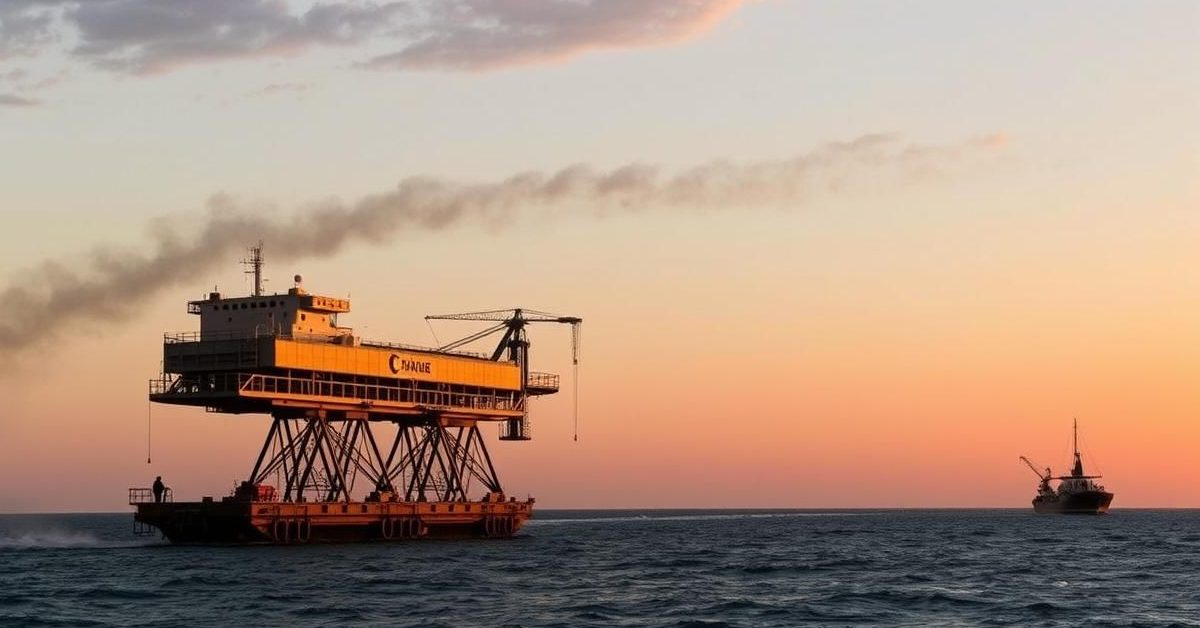The Paradox Unveiled: Why Oil Prices Fell Amid Middle East Tensions
In a turn of events that initially baffled market analysts and observers alike, global oil prices experienced an unexpected dip even as West Asia found itself gripped by escalating tensions. The conventional wisdom dictates that any significant military action in the Middle East, a region synonymous with global energy supplies, should send crude futures soaring. Yet, when Iran launched missiles targeting a US military facility in Qatar in retaliation for earlier American airstrikes, the price of oil surprisingly slipped. This counterintuitive reaction reveals a deep understanding of market psychology and the specific energy chokepoints that truly unnerve the world.
The Unseen Chokepoint: Why the Strait of Hormuz Looms Large
To understand the market’s seemingly illogical response, one must first grasp the unparalleled importance of the Strait of Hormuz. This narrow maritime passage, barely 21 nautical miles wide at its narrowest point, connects the Persian Gulf to the Arabian Sea and, by extension, the world’s oceans. It is not just a shipping lane; it is a vital artery for global energy. Astonishingly, over 20% of the world’s total petroleum consumption, including a significant portion of liquefied natural gas (LNG), transits through this single waterway. Crucial oil exports from major producers like Saudi Arabia, Iran, the United Arab Emirates, Kuwait, and Iraq all depend on safe passage through the Strait. Any threat to this waterway immediately triggers alarms across global capitals and financial centers, signaling a potential catastrophic disruption to global supply chains.
Qatar vs. Hormuz: A Crucial Distinction in Escalation
The key to the oil market’s reaction lies in the specific location of Iran’s retaliatory strike. The missiles targeted the Al Udeid Air Base in Qatar, a significant US military installation in the region. While undoubtedly a serious act of aggression and a stark reminder of the volatile geopolitical landscape, this was a targeted military response. It did not directly imperil the flow of oil, nor did it threaten the critical maritime infrastructure of the Strait of Hormuz. The market’s reaction underscored a critical distinction: military actions, while concerning, do not necessarily equate to an immediate supply shock unless they directly target major oil production facilities or, crucially, the vital shipping lanes.
Understanding Market Psychology: Pricing In the ‘Worst Case’ Scenario
Financial markets are inherently forward-looking, constantly attempting to price in future risks and opportunities. For oil traders, the *real* fear isn’t just conflict, but a *supply shock* – a sudden, large-scale reduction in the availability of crude oil that could send prices spiraling upwards and cripple global economies. The spectre of the Strait of Hormuz being blocked or severely disrupted is precisely this kind of worst-case scenario. When Iran opted for a retaliatory strike on a military base instead of directly threatening the Strait or crucial oil infrastructure, it arguably signaled a containment of escalation, at least in the immediate term, from the market’s perspective. This offered a strange kind of relief, a brief pause in the relentless pricing of doomsday scenarios, leading to the unexpected price dip.
Beyond the Immediate: Geopolitical Tensions and the Global Energy Outlook
While the immediate reaction saw oil prices soften, it’s crucial to acknowledge that the broader geopolitical chessboard in the Middle East remains incredibly volatile. The underlying tensions between Iran, the United States, and regional allies like Israel continue to simmer, creating an environment ripe for further unpredictable events. Global oil markets also contend with other significant factors, including persistent concerns about a potential global economic slowdown impacting demand from major consumers like China and India, as well as the ongoing production decisions by OPEC+ nations. The world’s reliance on stable energy flows from this region ensures that every tremor, every diplomatic maneuver, every military movement is meticulously scrutinized by traders and analysts. While this specific incident saw prices fall, the inherent fragility of the situation suggests that volatility will remain a constant companion for crude markets. The intricate dance between supply, demand, and geopolitical risk continues to dictate the ebb and flow of this vital commodity, keeping global economies on edge.















